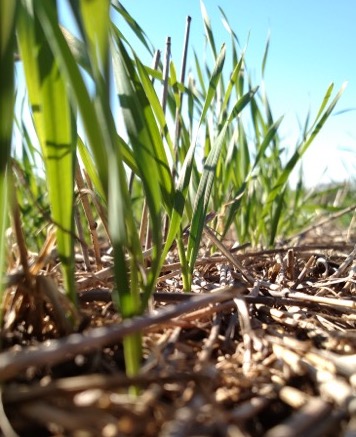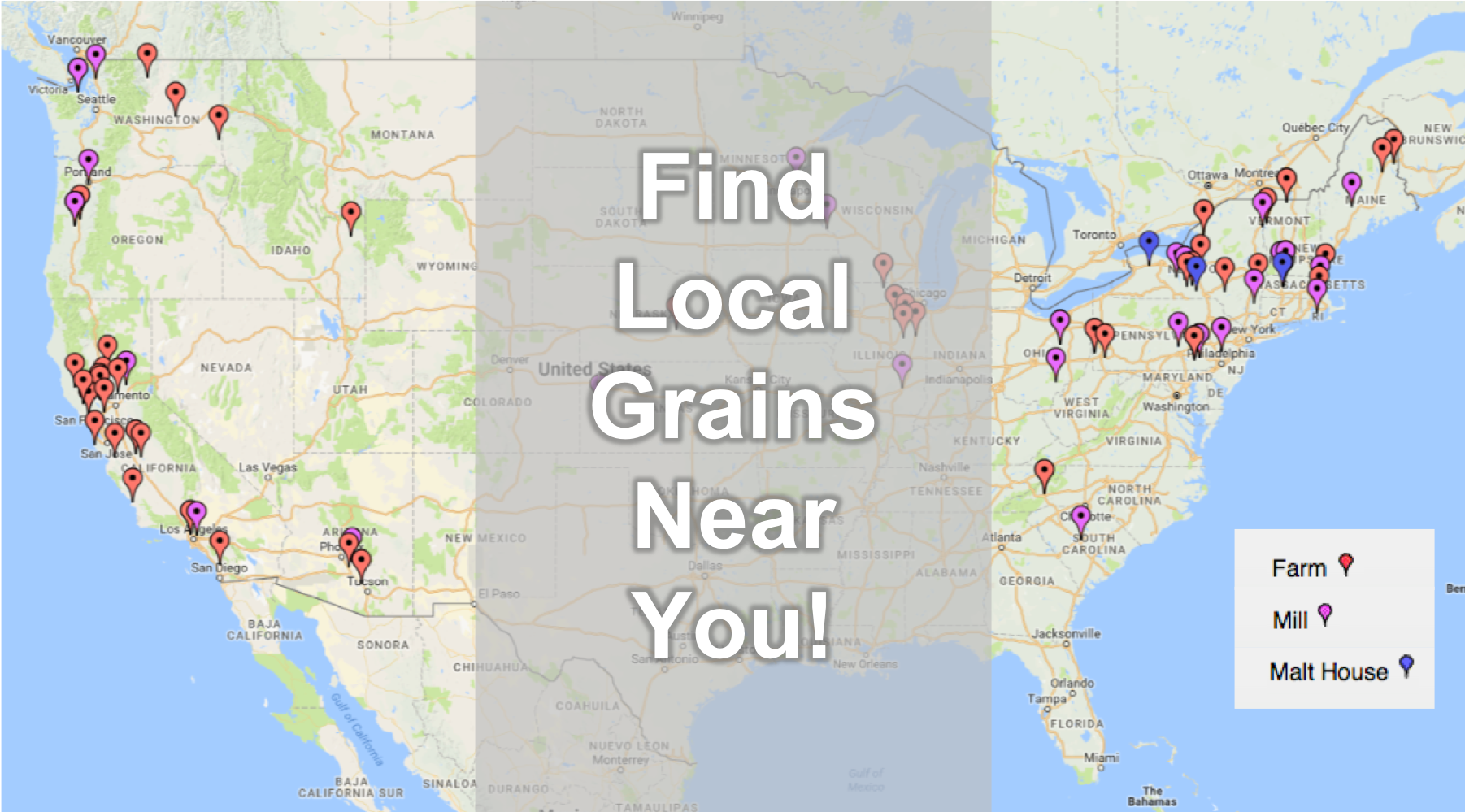The Local Grains Movement
Grains may be latecomers to the local foods movement, but they’ve arrived and they’re changing the way many communities think about flavor and flour. The local grain renaissance that’s making its mark, particularly throughout the Northeast and along the West Coast, is helping to connect consumers more closely with producers, millers, and artisan bakers.
Many of the farmers involved in local and specialty grain production are interested in growing something people can’t find on their grocery shelves, which has led to an expanding interest in heritage grain varieties. Perhaps one of the most significant benefits to these heirloom grains is flavor—what Dr. Stephen Jones at the Bread Lab calls the terroir of the grain. Instead of growing to maximize yield, farmers growing outside a commodity system are able to focus on growing varieties that produce much nuttier, sweeter, earthier flours than the all-purpose wheat flour we’re used to.
The full flavor of these grains is being explored and celebrated by bakers, chefs, and consumers alike, which is why it’s no surprise that whole grains are front-and-center in the local grains movement. Once you’ve committed to growing or purchasing heritage grains, it would be somewhat counter-intuitive then to refine and strip away the unique flavors of those carefully cultivated kernels. Beyond all the well-known health benefits that whole grains offer, their superior taste makes them hugely appealing—and heirloom grains, bred for flavor, take these culinary benefits of whole grains to the next level.
When we started learning about all the small-scale, local grain production happening in communities around the country, we decided to lend a hand by creating a hub of resources to help draw and strengthen the connections between consumers and the local or regional grain economies developing around them. We’d love to hear from you and learn about the farms, mills, malthouses, and grain projects happening in your backyard. Email us and tell us about the local grains making it to your table!
Local Grains Map: Farms, Mills & Malt houses
Grain Economy Resources
- The Bread Lab Plant Breeding Program at Washington State University — The Bread Lab researches wheat, barley, buckwheat, and other grains, identifying varieties that are especially well-suited in taste and flavor profile to applications in craft baking, cooking, malting, brewing, and distilling.
- The Colorado Grain Chain (Boulder, CO) and the UCCS Grain School (Colorado Springs, CO) are great resources for grain growers, millers, scientists and professionals — especially those in the Colorado area. They also host the UCCS Grain School, which offers both a college level academic course as well as open public forums about whole grain farming, whole grains and health, and the local grain community.
- Fair Food Philly in Philadelphia — This group works to promote sustainable agriculture in the region around Philadelphia, hosting an annual Farm & Food Fest
- The Greenhorns — This organization works to support and recruit new farmers and provide resources (films, radio, guidebooks, almanacs, anthologies, etc.) to teach sustainable agriculture, restorative land practices, and skill-building.
- Greenmarket’s Regional Grains Project — This project is focused on increasing both supply and demand for local grains in the Northeast region. Since 2009, all baked products sold through the Greenmarket have been required to contain at least 15% locally grown and milled flour.
- A Guide to Northeast Grains — This book is meant to serve as an introductory guide to bakers and consumers who would like to learn more about regional grain history and alternative flours like spelt, rye, buckwheat, emmer, einkorn, and triticale.
- Heritage Grain Trust (UK) — This organization works to encourage the production and use of heritage grains in the UK.
- Maine Grain Alliance — This group works to support the Maine grain economy through a seed restoration project and by hosting an annual Kneading Conference along with several other hands-on workshops throughout the year. They also award need-based technical assistance grants to help grain-based businesses in Maine.
- Meadows Mills in North Carolina — Meadows Mills is a manufacturer and supplier of mill stones and other milling parts and equipment.
- Northern Grain Growers Association in Vermont — This organization includes growers, maltsters, bakers, and grain enthusiasts all working to promote locally grown grains.
- Tehachapi Heritage Grain Project in Southern California — The project aims to preserve and grow organic heritage grains which are naturally drought tolerant.
- USDA NRCS Plants Database — This national database allows users to search by crop or species and find where in the US it’s being grown. The database also provides descriptive information about the plant and its place of origin.
- USDA’s National Small Grains Collection — The NSGC is a genebank that collects grain germplasm from around the globe and distributes seed freely to scientists. Their collection includes strains of wheat, barley, oats, rice, rye, triticale, and a variety of wild relatives.
- Additionally, historic mills offer insight and perspective into the history of regional grain systems and can act as a resource for those interested in learning more.
- The Mill at Anselma, Chester Springs, PA
- The Old Mill of Guilford, Oak Ridge, NC
- The Plimoth Grist Mill, Plymouth, MA
Read About Local Grains
Blogposts:
- Local Flour Fills the Gaps (5.6.20) - The recent shakeup to our food systems is teaching us the importance of diversity and flexibility – not just in our shopping lists and cooking repertoires, but in our supply chain and food systems themselves.
- The Northeast Grain Gab (11.6.19) - The Whole Grains Council joined individuals from all sectors of the Northeastern grain world, from New England to Canada, at The Northeast Grain Gab earlier last month to participate in a lively discussion on how to ‘connect the dots’ of this burgeoning regional grain economy.
- Climate Resiliency through Biodiversity and Local Grain Economies (10.2.19) - At a time when increasingly urgent headlines about climate change are commonplace, and many farmers are facing tough economic situations, this story about the importance of biodiversity, economic resiliency, rural communities, and the value of ecological health seems particularly poignant.
- Milling the Past (1.23.19) - Recent trends toward the local, sustainable and artisan have inspired many to look back to a time when small food economies were the only way of life. Those curious about past grain economies need look no further than the grist mill.
- How the Local Food Movement Paved the Way for Delicious, Whole Grain Baked Goods (11.15.17) - With a steady source of butter, sugar, and artisan chocolate at their disposal, pastry chefs have a knack for navigating direct routes to our taste buds. But recently the biggest source of flavor in baked goods is coming from somewhere you would never expect: the flour.
- The Kneading Conference: Summer Camp for Grainiacs, Flour Enthusiasts, and Bread Buffs (8.9.17) - Professional and hobbyist grainiacs alike gathered at the Maine Grain Alliance’s 11th annual Kneading Conference to find inspiration, to learn, and to connect with their fellow attendees around shared passions and good food.
- A Grain Gathering: Growing a Massachusetts Grain Economy (3.15.17) - On a frigid, blustery Saturday in March, farmers, millers, bakers, maltsters, brewers, distillers, and chefs from around the region gathered at Plimoth Plantation’s recently renovated Grist Mill to make new connections and strategize ways of growing the local grain economy.
- Getting Local Heritage Grains into Your Own Kitchen (1.25.17) - When it comes to maximizing the flavor and aroma of whole grain flour, nothing compares to freshly ground. We checked in with a few of the folks pushing to make fresh milling and local flours more widely available.
- Regional Grain Businesses at Work (11.9.16) - How do small farmers compete and thrive in a food system geared toward Big Agriculture? The answer almost always involves farmers banding together, often in concert with millers and manufacturers.
- The Grain in Maine’s Milled Mainly in Skowhegan (8.3.16) - Regional grain movements are being reborn around the country, including in Skowhegan, Maine, where speech language pathologist Amber Lambke reinvented herself as the local miller.
- Farmers and Bakers Seek the Flavor of Heirloom Grains (12.16.15) - More and more, we are seeing farmers, millers, and bakers going back to the basics of what constitutes good grain, and in turn, what makes good grain products.
- Grains, Coming to a Field Near You (6.4.14) — Stories of bakers, millers, and farmers “helping to revive a lost tradition – grain grown locally, milled locally, used by local bakers to create whole-wheat breads that taste like the bread eaten by our grandparents.”
Books:
- The New Bread Basket: How the New Crop of Grain Growers, Plant Breeders, Millers, Maltsters, Bakers, Brewers, and Local Food Activists Are Redefining Our Daily Loaf by Amy Halloran
- Restoring Heritage Grains: The Culture, Biodiversity, Resilience, and Cuisine of Ancient Wheats by Eli Rogosa
- The Third Plate: Field Notes on the Future of Food by Dan Barber
- Small-Scale Grain Raising: An Organic Guide to Growing, Processing, and Using Nutritious Whole Grains for Home Gardeners and Local Farmers by Gene Logsdon
- Grain by Grain: A Quest to Revive Ancient Wheat, Rural Jobs, and Healthy Food by Bob Quinn and Liz Carlisle


